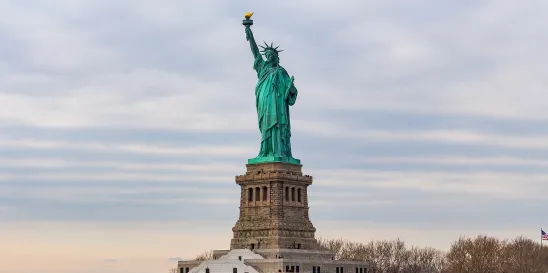Over a year ago, New York City Mayor Eric Adams announced the “City of Yes”, a plan to update the City’s zoning tools to support small businesses, create affordable housing, and promote sustainability. On December 6, 2023, the first of this trio, known as the “City of Yes for Carbon Neutrality” zoning text amendments (“COYCN”) was officially approved by the City Council. The passage of COYCN marks a huge victory in the City Administration’s efforts to decarbonize the City’s energy grid, building stock, vehicles, and waste streams.
COYCN is a necessary step towards achieving the City’s and State’s carbon reduction and renewable energy goals: in 2016, the City introduced 80×50, and committed to reducing greenhouse gas (“GHG”) emissions by 80% by 2050. In 2019, the State passed the Climate Leadership and Community Protection Act (“CLCPA”), and committed to reducing GHG emissions by 40% by 2030 and 85% by 2050, and to transitioning the electric grid to 70% renewable energy sources by 2030 and 100% by 2040. The City also enacted the Climate Mobilization Act, which includes, among other things, Local Law 97 (“LL97”), imposing a series of escalating GHG emissions caps for buildings larger than 25,000 square feet (with certain exceptions) beginning in 2024, with corresponding financial penalties for non-compliance. COYCN will support these goals by removing and/or easing certain zoning restrictions that have, historically, thwarted the development of renewable energy and decarbonization of the City’s building stock.
COYCN makes a number of citywide changes to the Zoning Resolution to eliminate barriers to high-performance building retrofits, decarbonization retrofit projects and to allow solar energy, wind energy, electric vehicle (“EV”) charging, and energy storage systems (“ESS”), such as battery storage.
Energy Decarbonization. COYCN enables the development of “distributed energy resources” (i.e., wind, solar and ESS) throughout the City to support the transition to an energy grid fueled by renewable energy sources by:
- Removing the coverage and setback requirements for rooftop solar, applying a 15-foot maximum height limit to all flat-roof solar installations, in all zoning districts, and permitting a 5-foot height limit to pitched-roof solar installations;
- Allowing installation of solar awnings and canopies over parking areas as “permitted obstructions”;
- Reclassifying “solar generation” as “renewable energy generation” and permitting installations equal to or less than 10,000 square feet as-of-right in residential zoning districts;
- Creating a new City Planning Commission authorization to allow for height and setback relief for future applications for on-shore wind along the waterfront; and
- Creating new uses within Use Groups 4 and 6 to allow for as-of-right installation of ESS smaller than 10,000 square feet in residential districts (while continuing the Board of Standards and Appeals [“BSA”] special permit for larger ESS in residential neighborhoods), and permitting as-of-right installation of ESS without size limits in commercial/manufacturing districts.
Building Stock Decarbonization. COYCN removes existing barriers to support critical building retrofits to achieve high energy efficiency levels through:
- Updating permitted obstruction rules to allow accessory mechanical and energy infrastructure equipment on roofs above the maximum height in certain districts, increasing coverage percentages in certain districts, allowing such systems in required open areas, easing certain floor area restrictions, extending screening requirements, and creating a BSA permit for buildings that require additional relief to implement electric retrofits;
- Creating new allowances for additional wall thickness by allowing increased floor area deductions for interior insulation, maintaining existing overcladding, and allowing for recladding that meet the City Energy Code requirements; and
- Simplifying the existing zone green deduction by creating a flat 5% floor area exemption, aligning the exemption with LL97 by allowing existing buildings that retrofit and become fully electric to be eligible for the exemption, as well as allowing new buildings that are designed to ultra-low energy Passive House-style standards to be eligible for the exemption.
Transportation Decarbonization. COYCN helps encourage a transition to EVs, expand the use of bicycles, and increase the use of electric micro mobility and mass transit by:
- Permitting EV charging facilities in all commercial/manufacturing districts;
- Allowing owners of accessory parking facilities to designate up to 20% of parking spaces (or 5 spaces, whichever is greater) to flexible, public EV charger and/or car sharing, and allow, in public parking facilities, 100% of spaces to be dedicated to public charging;
- Allowing, in most commercial districts and all manufacturing districts, up to 20% of accessory parking spaces to be occupied by any combination of car sharing, car rental, public EV charging and, where permitted, commercial vehicle storage, and allowing 100% of spaces in public parking lots/garages to be available for EV charging, and allowing 50% of spaces to be available for car sharing/rental, and commercial vehicle storage; and
- Creating a “public bicycle and micro mobility parking” use which would be allowed in all commercial/manufacturing districts, and allowing storage racks and lockers (classified as “permitted obstructions”) in yards and open spaces.
Waste Decarbonization. COYCN also supports the reduction of stormwater runoff and the amount of organic waste sent to landfills, as well as increase local food production through:
- Expanding the use of permeable paving;
- Creating more flexible street tree requirements by allowing Department of Transportation-approved connected tree beds and Department of Environmental Protection-approved raingardens;
- Adding small-scale composting as an accessory use, allowing neighborhood-focused composting and recycling facilities 5,000 square feet or less to be located in all commercial districts within commercial storefronts, and continuing to permit large-scale facilities in heavy manufacturing districts; and
- Removing existing certification requirements and permitting non-residential greenhouses, which would still be subject to Department of Buildings review.
The Administration’s two other City of Yes initiatives are also about to reach significant milestones: the City of Yes for Economic Opportunity zoning text amendment recently entered into public review and has been referred out to the City’s community boards and borough presidents, and the City of Yes for Housing Opportunity zoning text amendment is in the environmental review stage, and is expected to enter into public review in the spring.





 />i
/>i
